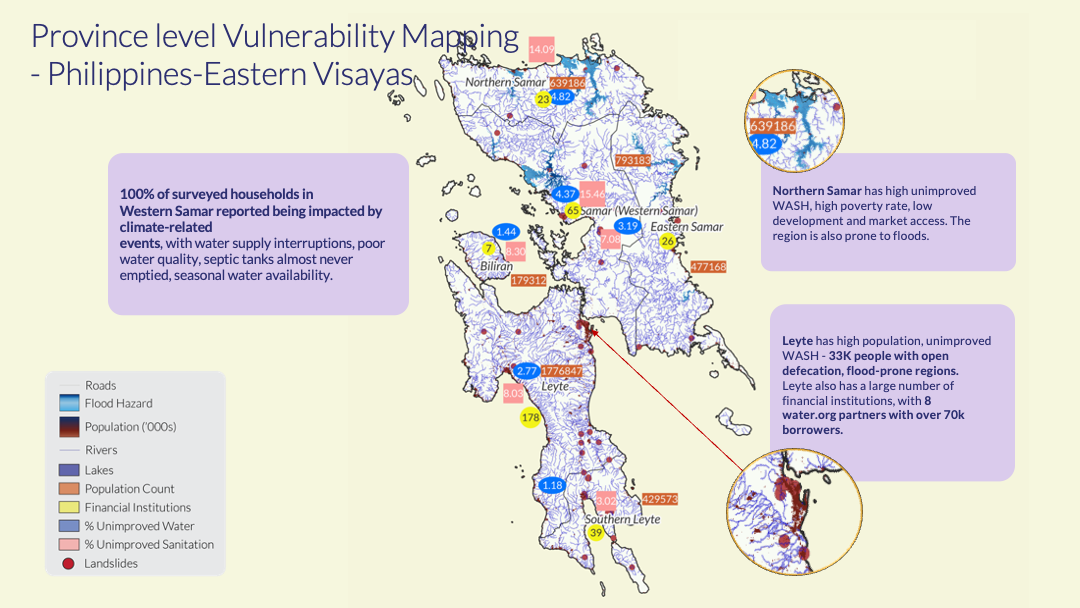Overview of the Challenge
In the Philippines, typhoons and flooding leave 74% of households disrupted, with water supply and sanitation systems often collapsing under strain. While 62% of households have access to safely managed sanitation services, only 48% access safely managed drinking water. Women disproportionately spend time fetching water, while low-income households pay up to 30 times more due to unregulated private suppliers.
The Ask
Water.org needed to pinpoint how its WaterCredit program could strengthen resilience in disaster-prone regions. They required localized vulnerability mapping to identify financing needs, quantify demand for WASH loans, and recommend systemic reforms for utilities, small enterprises, and households.
What We Did
Athena Infonomics and Water.org mapped vulnerabilities in Zamboanga, Calabarzon, Eastern Visayas, and Bicol. Findings revealed high dependence on septic tanks (81% never desludged) and limited access to financial support, with only 2% of households receiving subsidies or grants.


What to Expect
Recommendations included WaterCredit loans for household water storage and desludging, alongside decentralized wastewater treatment to reduce open defecation. Nationally, reforms proposed pooled financing for small utilities, performance-linked tariffs, and incentives for smart technologies to cut water losses.
Photo credit: CNN
For more details on the project, read.
Access the full learning brief!
